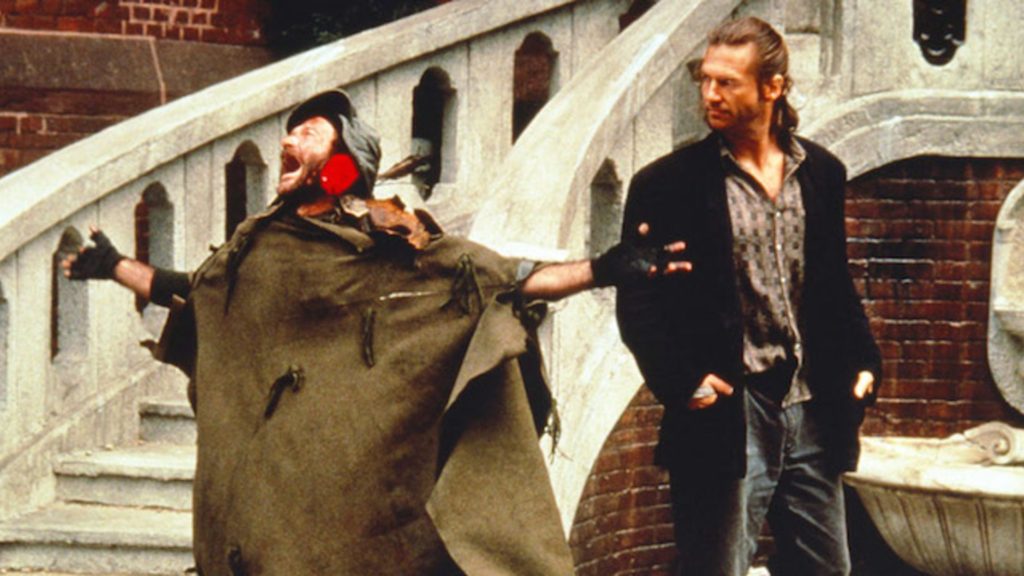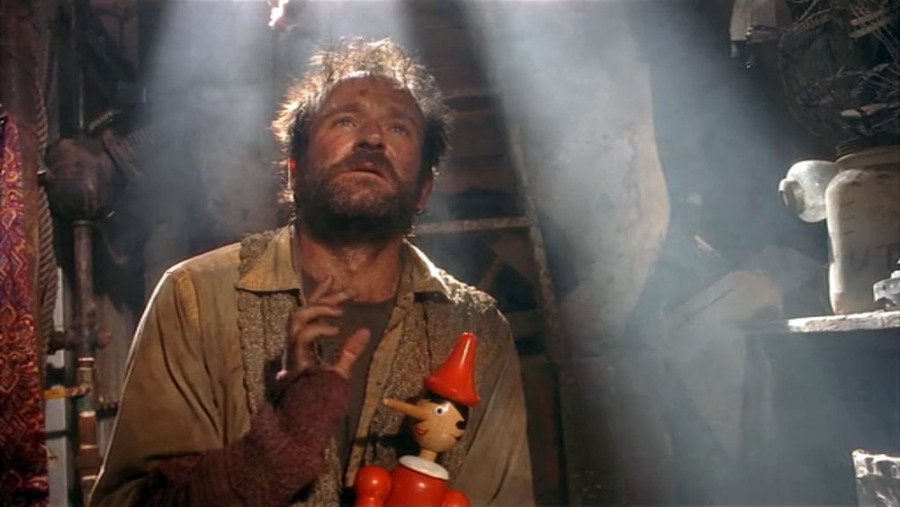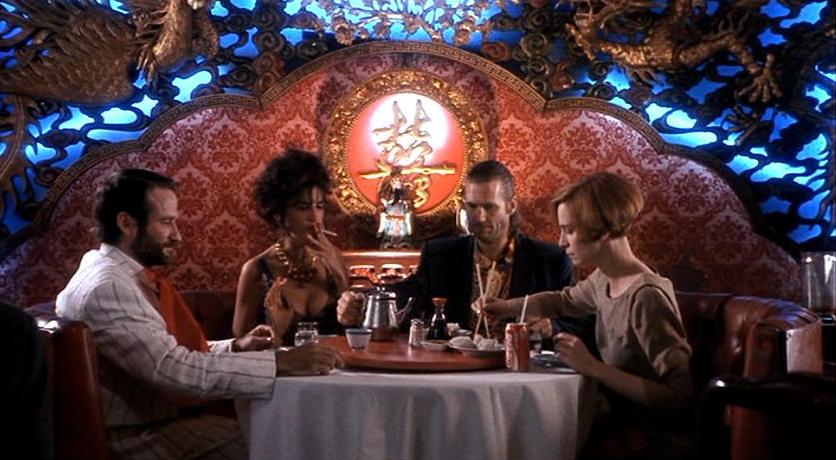Right now, most of us have a little extra time (at least) to take in some new movies or shows. The recommendations I’ve been seeing around the Internet—including here at The Sartorial Geek!—are just fantastic and worthy of your time. But there’s one lovely movie still floating just under the radar that deserves your attention now that you’re in need of a good watch.
Terry Gilliam’s 1991 film The Fisher King is about as critically regarded as a Gilliam film gets (which is saying something), but still manages to lie low. It’s the first of his directorial turns the Monty Python member didn’t at least co-write; the screenplay was penned by Richard LaGravenese, who would go on to write The Horse Whisperer and Water for Elephants. It’s got a tiny cast, a simple story, and a heartfelt message tucked away under a deceptively grimy top layer.
Oh, and it stars Jeff Bridges as basically Howard Stern and Robin Williams as an Arthurian knight. Got your attention now?
Hit the Road, Jack

The Fisher King focuses on Jack Lucas: a big-time shock jock with no filter and a devoted cadre of listeners. He’s even about to make the leap to sitcom stardom . . . until one of his off-the-cuff rants leads an obsessed listener to commit a horrific crime at an upscale Manhattan restaurant that leads to the loss of many lives. With Jack’s morning broadcast very clearly (and audibly) the instigator of the tragedy, his career is over.
Three years later, holding down a dead-end job under a girlfriend (Mercedes Ruehl as Anne) he’s not doing particularly well with, he contemplates ending it all . . . until he’s set upon by a violent gang, and subsequently rescued by a band of homeless people led by Parry. Parry believes himself to be a knight sent by God to find the Holy Grail on the Upper East Side—and he also believes Jack to be “The One” who will help him complete his quest. Jack would ignore all of this, were it not for one unfortunate tangle: Parry is a direct victim of the tragedy caused by Jack’s outburst.
The film follows their quest through New York as Jack tries to help Parry find his Grail, woo the mousy girl Parry’s become smitten with (Lydia, played by Amanda Plummer), and just maybe find some redemption for himself. It’s a sweet story . . . and also a surprisingly direct adaptation of one of the earliest Grail legends in the Arthurian canon.
The Holy Fool

Sir Perceval was first named in the second-ever known Arthurian romance, Erec and Enide by Chretien de Troyes. That first little cameo in 1170 would eventually be expanded into a full story, also by Chretien. As a boy living in the woods with his mother, Perceval is so struck by the heroic stature of a group of knights passing through that he resolves to become a knight himself. Armed with a lot of spears and very little knowledge of society (save for some iffy advice offered by his mother), he travels to Camelot to fulfill his dream.
Perceval’s journey doesn’t start well. He wins some friends with his well-meaning ignorance, but that same trait causes some big issues for others. In particular is the earliest story of the Fisher King: a ruler who, wounded after the hunt, lives in a wasted land he can only provide for by fishing. Also in the King’s possession is the Holy Grail, which Perceval observes being passed around the table when staying overnight at the King’s castle. However, in this first story, he doesn’t even know what it is, much less that he could convey its healing powers to the King simply by asking what it is.
Several other writers put their own spin on Perceval’s story, including his ties to the Fisher King and the Grail. Over time his character coalesced into that of the Holy Fool: ignorant, but pure and faithful. The Fisher King himself has also solidified as a figure over time, as a ruler and father figure awaiting healing while his world dies around him—when all he needs is right in front of him.
A Deeper Look

There’s a lot more to The Fisher King than just a retelling of one legend—though it’s fun to watch that way. It’s even fun to watch simply for what it is on the surface. But deeper cuts show there’s a lot more flexibility between the characters’ roles, and even more Arthurian imagery lurking around the edges.
For example, in the original story of Sir Perceval—Chretien’s—the Red Knight was a fleeting figure. The Knight heckled Perceval on the way to Camelot, saying he’d never become a knight. King Arthur was far too charmed by the boy’s attitude to not knight him on the spot. But when Arthur offered him a suit of fine gold armor, Perceval said he wanted red, like the jerk outside who made fun of him. After an offhanded remark from another knight that Perceval could totally just kill the Red Knight and take his armor . . . well, that’s exactly what happened.
In The Fisher King, Parry is haunted by a Red Knight only he can see: huge, on horseback, and very on fire. The images only come in moments when Parry’s repressed memories and grief begin to bubble to the surface: a threat to the personality he’s built for himself, but also an image of his true self. After all, once Perceval took the armor, he was the Red Knight—or, a better version of it once he’d fought off the wicked one.
The duality continues elsewhere. While Jack is clearly the King and Parry is the Fool, they pass the roles off to each other later in the film (just how, you’ll have to see for yourself). There are also two very different views of love and “chivalry.” As Parry believes he as a knight must “earn” Lydia (who herself is similar to Perceval’s love interest Blancheflower), Jack steams right past treating Anne as an equal and into taking her for granted. Maybe they’ll fix that whole “romance” issue if they meet somewhere in the middle . . . once Anne and Lydia have had a long talk about liking themselves first and foremost.

Contrary to the state of home video when it first came out 30 years ago, it’s very easy to watch The Fisher King on several streaming services. It’s got some of the best performances you’ll see out of all four of its stars, a story that has no right to be as heartwarming as it is, and that dark, surreal Gilliam umami laid over an unusually mundane setting. It’s a cleverly disguised booster shot of hope, love, and faith . . . and we can all use that.


Comments are closed.